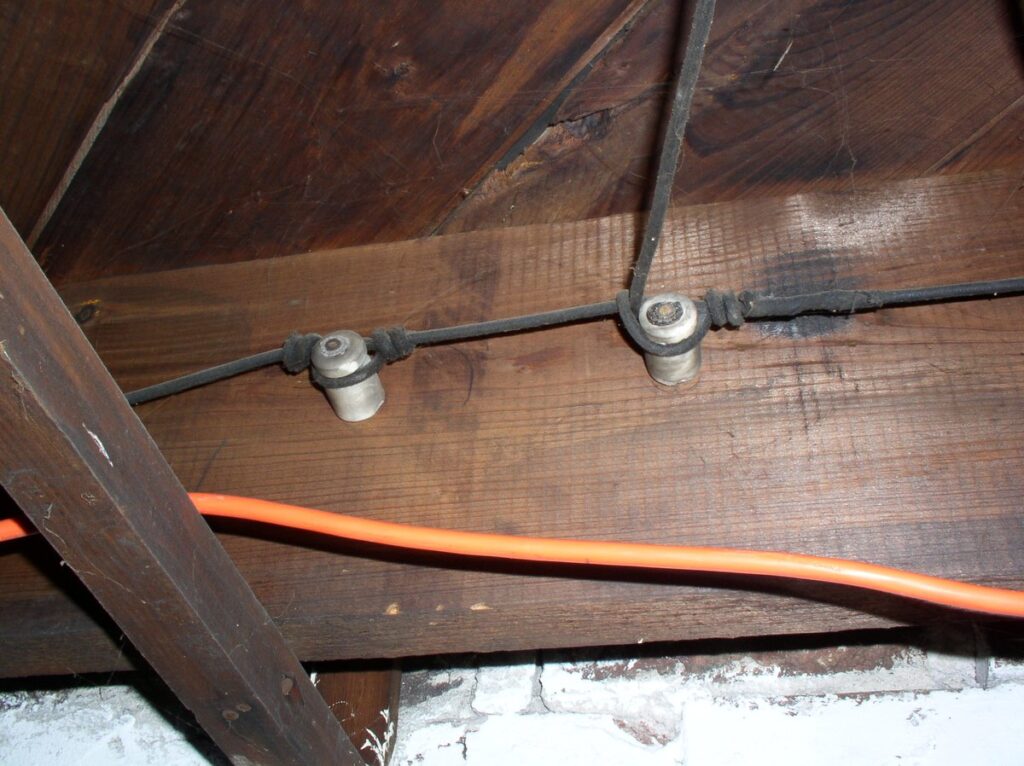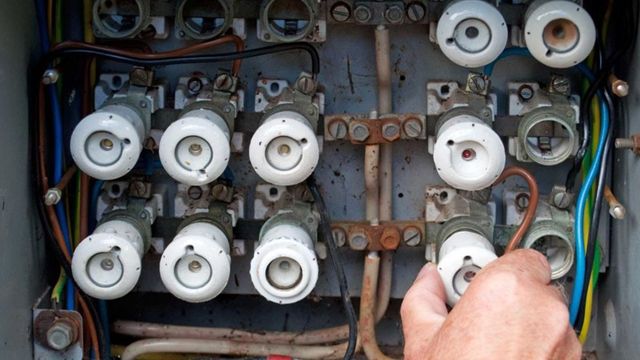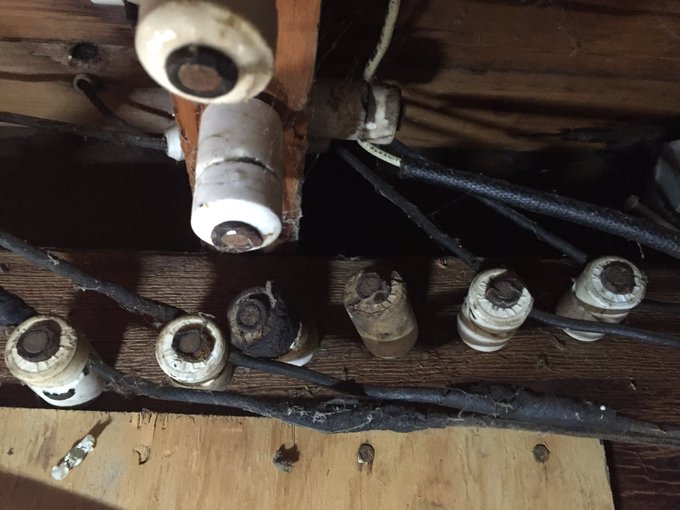Planning to replacing knob and tube wiring in plaster walls? If you’re like most homeowners, you probably don’t give much thought to the wiring behind your walls. But if your home was built before 1950, there’s a good chance it has knob and tube wiring.
While this type of wiring is perfectly safe, it’s not very efficient by today’s standards. If you’re thinking about upgrading your home’s electrical system, you might be wondering how to replace knob and tube wiring in plaster walls.
Here’s a quick guide to help you
What is Knob and Tube Wiring?

Knob and tube wiring is an early system of electrical wiring that was commonly used in houses and other buildings until the mid-20th century.
The system gets its name from the ceramic knobs that were used to support and insulate the wire where it ran through wooden beams and joists, and from the ceramic tubes that were used to protect wire passing through masonry walls.
Although knob and tube wiring is no longer used in new construction, it can still be found in many older homes. If you live in an older house, there’s a good chance that at least some of your wiring is knob and tube.
Why did they stop using knob and tube wiring?

There are several reasons why knob and tube wiring is no longer used in homes.
One reason is that the insulation on the wires deteriorates over time, which can lead to short circuits and fires.
Another reason is that the system was not designed to accommodate the electrical demands of today’s homes, which often have multiple appliances and electronics running at the same time.
Additionally, knob and tube wiring is not as durable as modern wiring systems, so it is more likely to break or become damaged over time.
Should I replace my knob and tube wiring?

If your home was built before 1950, it may have knob and tube wiring. This type of wiring was common at that time, but it is now outdated and considered a fire hazard. If you have knob and tube wiring in your home, you should replace it as soon as possible.
There are a few things to consider before you replace your knob and tube wiring.
1. Check Policy
First, you need to check your home insurance policy. Some policies will not cover homes with knob and tube wiring. If your policy does not cover knob and tube wiring, you should consider replacing it anyway to protect your family from the risk of fire.
2. Cost Replacement
Another thing to consider is the cost of replacement. Knob and tube wiring can be expensive to replace, depending on the size of your home and the amount of work involved. You may also need to hire an electrician to do the work, which will add to the cost.
3. Fire Hazard
However, the most important thing to consider is the safety of your family. Knob and tube wiring is a fire hazard, and if there is a fire in your home, it could spread quickly and put your family at risk. Replacing knob and tube wiring may be costly, but it is worth it to keep your family safe from fire hazards.
Options to Replacing knob and tube wiring in plaster walls

There are three popular ways to run wiring in plaster walls:
- Knock out a section of the plaster and run the new wires in the wall cavity. This is the most straightforward method, but it does require some patching and repair work afterwards.
- Use surface-mounted electrical conduit to run the new wires along the surface of the plaster. This is a less invasive option, but it can be difficult to conceal the conduit once the wiring is in place.
- Use wire molding or baseboard molding to create a hidden chase for the new wires. This option requires some additional carpentry work, but it can be an attractive way to update your home’s electrical system.
- Hiring a professional to do the work is the best way to ensure it is done correctly and safely. A professional will have the experience and tools to properly assess the situation and make any necessary repairs. They will also be able to advise you on any other electrical work that may need to be done in your home.
How to remove knob and tube wiring
Knob and tube wiring was once the standard for household electrical circuits. But if your home still has it, you may need to remove it and replace it with modern wiring. Here’s how to remove knob and tube wiring from plaster walls:
- First, turn off the power to the circuit at the breaker box. Then, remove any light fixtures or other devices that are attached to the circuit.
- Next, use a screwdriver or drill to remove the outlet boxes from the wall. Be careful not to damage the plaster around the box.
- Now, carefully fish the wires out of the wall. You may need to use a wire snake or other tool to help you.
- Once all of the wires have been removed, patch up any holes in the plaster with joint compound.
- Finally, install new outlet boxes and wire them according to the manufacturer’s instructions.
Can you rewire a house without removing plaster
If you live in an older home, chances are it has knob and tube wiring. Knob and tube wiring was the standard way to wire houses in North America until around the 1940s. The system gets its name from the ceramic knobs that were used to support and route the electrical wires, and the ceramic tubes that were used to protect the wires where they passed through framing members.
The good news is that knob and tube wiring is not a fire hazard. The bad news is that it’s not compatible with modern electrical systems, and it’s not always easy to replace without damaging your walls.
If you live in a home with plaster walls, you may be wondering if you can rewire your house without removing the plaster. The short answer is yes, it is possible to rewire a house without removing plaster, but it’s not always easy, and it’s not always the best option.
How to repair knob and tube wiring
If you live in an old house, chances are good that you have knob and tube wiring in the walls. While this type of wiring is not necessarily dangerous, it is not up to current standards and should be replaced. The following steps will show you how to repair knob and tube wiring in plaster walls.
- Turn off the power to the circuit at the breaker box or hidden house electric meter.
- Remove the plaster from around the wire using a hammer and chisel or a power drill with a plaster-removal bit.
- Cut out the section of wire that needs to be replaced, using wire cutters or a utility knife.
- Strip 1/2 inch of insulation from the end of each wire, using wire strippers.
- Twist the ends of the wires together clockwise, using your fingers or pliers. Make sure that the wires are twisted together tightly so that they will make good contact when reconnected to the circuit.
- Wrap electrical tape around the twisted wires, making sure that there are no gaps between the tape and the wires. This will help prevent shorts in the circuit.
- Reinstall the plaster around the wires, using a putty knife or trowel to smooth it into place. Allow the plaster to dry completely before turning on the power to the circuit at the breaker box
Can you connect new wiring to knob and tube?
Yes, you can connect new wiring to knob and tube as long as the connection is made with a UL-listed splice and the new wire is of the same or greater ampacity. While some electricians will simply run the new wire alongside the old, it’s best to drill a new hole through the framing next to the old wiring and fish the new wire through. This will minimize damage to the plaster and provide a cleaner installation.
What is considered outdated wiring?
If your home was built before 1950, it may have knob and tube wiring. While this type of wiring was once considered state-of-the-art, it is now considered outdated and dangerous. Replacing your knob and tube wiring with modern wiring is a wise investment that will make your home safer and more attractive to potential buyers.
Replacing knob and tube wiring in plaster walls cost
Replacing knob and tube wiring in plaster walls can be a costly endeavor. The expense is often due to the need to remove and replace the existing plaster, as well as the cost of the new wiring and materials. The labor costs associated with this type of project can also be significant.


